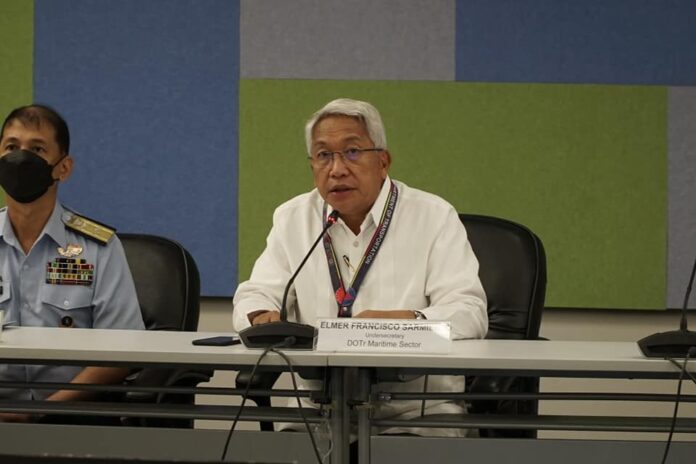
-
Transport officials plan to meet stakeholders to address their concerns, including the difficulty in returning empty containers
-
Transport Undersecretary for Maritime Elmer Sarmiento said the meeting with a small group of stakeholders could lead to a transport summit
-
Sarmiento and the Philippine Ports Authority belied claims of some truckers that Manila ports are congested
-
PPA said berth occupancy rate in Manila’s three terminals is at 43%, vessel berth waiting time is currently at three days or shorter, and average yard utilization of the three Manila ports is at 59%
Transport officials belied reports that Manila ports are congested as claimed by some truckers. Still, a stakeholders’ meeting is eyed to address industry concerns, including the difficulty in returning empty containers, said Transport Undersecretary for Maritime Elmer Sarmiento.
Despite their recent high utilization, Manila ports are not congested, according to Sarmiento during a press conference for the 2022 National Maritime Week Celebration on September 19 at the Philippine Ports Authority (PPA) headquarters.
The high utilization, he explained, is due to arrival of shipments for the holiday season but that the utilization rate is expected to slip as holiday shipments wane.
In a separate statement, PPA said “all aspects of operations at the Manila Ports are under optimum condition with an average berth occupancy rate for the North Port [Manila North Harbor domestic terminal], South Harbor, and the Manila International Container Terminal at 43%.”
Vessel berth waiting time is currently at three days or shorter while average yard utilization at the three Manila ports is at 59%, which is below the 75% threshold.
Average crane productivity is at 25 moves per hour per crane, which PPA described as “healthy.”
PPA officer-in-charge and assistant general manager for operations Francisquiel Mancile, in an interview with PortCalls after the press conference, said gate-outs are higher than vessel discharge, which means the yards are not congested.
Truckers are complaining about the difficulty in returning empty containers to yards, claiming congestion in empty depots and even inside Manila international terminals.
Sarmiento said they recognize complaints of truckers but urged them to return empties to container yards outside Metro Manila, which he said have ample space based on data supplied to him.
He also asked shipping lines to “remove their overstaying containers” per Bureau of Customs (BOC) policy to prevent congestion.
Containers should be re-exported within 90 days, otherwise they will be considered importation and subject to payment of duties and taxes, according to a BOC ruling.
Sarmiento said there’s a plan to initially meet with a small group of stakeholders to address their concerns. The meeting could later lead to a transport summit.
The Alliance of Container Yard Operators of the Philippines (ACYOP) earlier explained the high utilization of its members’ empty depots stems from uneven return and withdrawal rate of empties, with more empties for return than those being withdrawn.
Philippine trade is skewed toward imports.
The situation gets amplified during the “ber” months and the Christmas season due to even higher imports, which then leads to more empty boxes, ACYOP president Roger Lalu noted.
Earlier Association of International Shipping Lines (AISL) president Patrick Ronas said the high utilization at container yards results from vessel arrival delays to Manila caused in turn by vessel delays in origin ports, still a consequence of the COVID-19 pandemic.
Ronas said the situation may persist until next year or near term, he but noted that “containers and ships are moving.”
The Bureau of Customs said it had formed a task group to work closely with stakeholders on issues relative to the return of empty containers and is also discussing a proposal to automate monitoring of return of empty containers to shipping lines’ designated container yards.
BOC will also be requiring empty container yards to be accredited with the agency so they can exercise supervision and control over such facilities. – Roumina Pablo





The BOC should require all shipping lines to have their own container yard to avoid delay of empty containers return which is they have a full control not a rented CY with many users and they have no control. So implement the law no own CY of shipping lines no registration or accreditation to the BOC that simple like that to solve the problems. Like LTFRB no parking for truck no franchise will be issued until you are compliance.
Comments are closed.